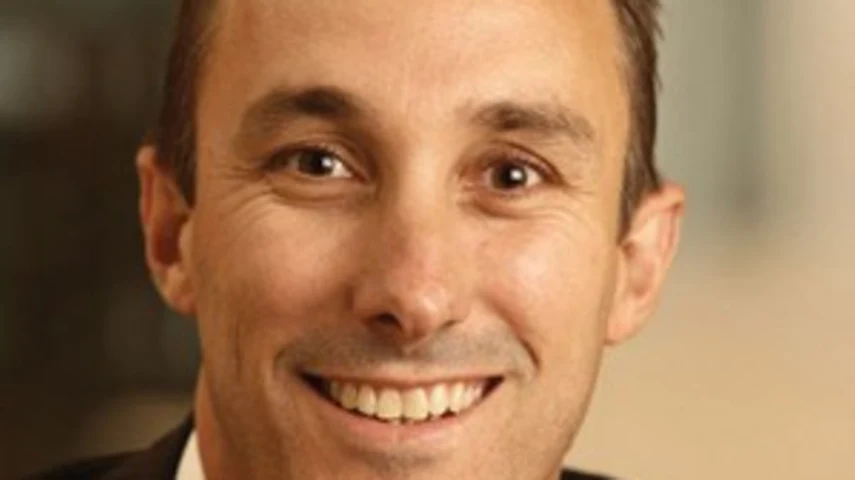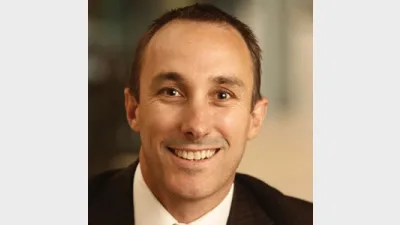The challenges faced by risk advisers in 2014



The risk insurance industry is often defined by its challenges, with under-insurance, lapse, regulation and competing direct propositions unlikely to disappear. Despite this, sales in both the group and individual spaces are continuing to grow. Kate Cowling looks at what the new year has in store and what challenges will be most relevant for advisers.
For an industry that’s still on an overall growth trajectory, risk insurance is pervaded by problems.
High claim levels, under-insurance, lapse, the competitive pressure of the direct channel and regulatory crackdowns are just some of the issues plaguing advisers traversing the risk space.
As the risk insurance game has evolved and opened new purchasing avenues for consumers, the obligation of advisers to meet tightening standards has become subject to further scrutiny.
But despite the challenges, sales in the industry are continuing to prevail.
Recent DEXX&R statistics suggest inforce risk activity shot up 10.5 per cent in the year to September 2013, rising from $10.6 billion to $11.7 billion in just 12 months.
Group risk is performing particularly well, growing by 15 per cent over the same 12 months from $3.5 billion to $4 billion.
And the growth is expected to continue – with group risk premiums of up to 40 per cent doing a stellar job of offsetting higher-than-expected TPD and salary continuance claims, according to the DEXX&R research.
BT Financial Group national life insurance product manager, Scott Moffitt, said stakeholders have the opportunity to capitalise on the growth while simultaneously offsetting some of the more pertinent challenges.
“The key for the industry is continuing to look at how you can improve the service model – and collectively improving the messaging to the market on the value of protection and the need for it is something that the industry needs to come together and deliver on,” he said.
“It will be about trying to really drive a change this year about educating the market on the claims process.”
TAL Life CEO Brett Clark described the next 12 months as an “exciting time” which would force better engagement between insurers, advisers and consumers.
However, the question of advisers’ evolving roles in the tightly contested direct insurance market and how to deal with the issue of lapse is not as clear cut.

The direct threat
With the growing popularity of the direct risk insurance proposition, a key challenge for advisers will be finding a way to share the previously planner-dominated space.
If consumers can turn on the television or open up their web browser to purchase their ideal life insurance package, could the adviser be rendered redundant?
Most stakeholders say no.
“It is our view that the business that is coming through the advice channel has significant benefits,” Moffitt said.
“It ensures that those customers get the right advice; we see that they are a well-informed consumer, you don’t see the under – or over-insurance issues through that process. You have a better informed consumer at the time they accept the policy, and also a better insured consumer at the time you go through the claims process.”
Indeed, the direct channel should not be seen as a competitor, according to Metlife head of insurance products Richard Anderson, but rather a distinct offering for a very separate consumer segment.
“I do have a large number of colleagues in the financial planning or insurance provider market and they’ve indicated to me that their clients are not compromised by direct insurers,” he told Money Management.
“In fact, some are saying that direct insurers’ approaches are educating their clients and because they believe and subscribe to needs-driven advice, clients generally do make contact with their planner or adviser before taking any action.”
TAL’s Brett Clark agrees it is not a matter of one insurance stream being optimal, but more about the insurance arena becoming dynamic and catering to different desires.
“The needs of consumers are wide and varied, and while we believe it is important people obtain quality financial advice, the reality is many people do not seek it out,” he said.
“The newer channels via superannuation and direct have been important to expand the reach of life insurance to help people get cover when they otherwise wouldn’t,” he added.
But apart from contesting the traditional life insurance relationships, the direct proposition throws out other challenges for the industry as a whole, according to Synchron director Don Trapnell.
“I think we are going to see insurance companies starting to realise that the direct insurance through television advertising has a horrendous lapse rate,” he said.
“And that’s because if a person buys on price they’ll sell on price.
“We are going to see insurance rates recognising that and increasing the premiums on those channels,” he added.

The lapse dilemma
Policy lapse continues to cast a dark shadow over the risk insurance industry – and one without a simple cause or solution.
Data from Plan for Life predicts lapse rates for advice-based sales will hit an average 8.4 per cent in first-year policies by 2018 – and as high as 39 per cent for direct policies.
Meanwhile, policy cancellations are at the highest level for two decades, according to Plan for Life. But the actual impact of lapse is a matter of contention.
As the life insurance landscape changes, TAL’s Brett Clark believes lapse is a natural consequence of savvy consumer habits.
“Consumers are price-checking and asking their advisers to find them better deals every year,” he said.
“We’re seeing some of that, there’s no doubt there’s evidence of that happening.”
For Moffitt, the much-talked about trends have not been as dire as predicted.
“We’ve seen that while in the industry there’s a lot of talk of the duration of lapse, we have not seen that same trend, or the extent of that trend,” he said.
“We have seen very modest deterioration of our lapse experience.”
 Synchron’s Trapnell views lapse as an inevitability, given Australia’s ageing population, and believes too much emphasis is placed on the phenomenon.
Synchron’s Trapnell views lapse as an inevitability, given Australia’s ageing population, and believes too much emphasis is placed on the phenomenon.
He said the word ‘lapse’, which is currently broadly inclusive, needs to be redefined.
“If you notice, with one life insurance company, if a client declines an automatic increase, that’s actually recorded as a lapse. With another insurance company, if a client dies, that’s recorded as a lapse ... Of course we’re going to have an increase in terminations, based on what they’re calling a lapse. When they start to separate what lapse rates really are, I will then take notice of what they are really saying.
“People are getting older, we’ve got an ageing population, so we must have that – it must happen.”
Lifting industry standards
Beyond lapse, the real benchmark for the risk insurance industry should be sustainability, Trapnell said.
“I would like to see the debate broadened in relation to the separation of disciplines,” he said.
Risk advice may not be compatible with financial planning, according to Trapnell, who is a strong advocate for government-level discussion about the best direction for what he sees as divergent practices.
He said when the Financial Services Reform Act came into play, it melded the financial planning and life insurance – perhaps unnecessarily.
“The challenge is – a life insurance policy has more in common with a home and contents policy than it does with a transition to retirement program. Yet life insurance is lumped in with financial planning. That doesn’t make a lot of sense to me,” Trapnell said.
For Metlife’s Richard Anderson, sustainability will depend on further regulatory intervention to protect the various stakeholders.
“We’re increasingly seeing the advertisements on free-to-air TV and pay TV by legal firms, essentially touting for claims entitlement rights,” he said.
“I feel this is an issue moving forward, because we really do need to educate insured members on their right to claim.
“Members’ entitlements are really being eroded by legal fees or share of entitlements associated with successful claims, when in reality if the insured members had made an approach to the insurer or to their super fund directly, they would have received a full entitlement to benefit in their own right.”
Beyond the legal sphere, Anderson said he would like to see regulation of ratings websites and research houses.
“It is extremely disappointing that there are no regulations governing rating houses or research industry comparison sites,” he said.
“I’m a proponent of our industry body to lobby for adoption of regulation of these sites.”
Conversely, for BT’s Moffitt, the improvement of the industry rests on education and consistency in the need for insurance.
“We’ve been particularly vocal about the need to get a consistency in the message we put out around the product and services developed, particularly in the claims space,” he said.
“We’re a big believer that there should be an industry performance benchmark on that experience – and that will help to build the perception of the value of life insurance.”
He said driving that level of consumer education will require industry-wide cooperation.
“It’s a reasonably tough time, so the key for the industry is continuing to look at how you can improve the service model and collectively improve the messaging to the market on the value of protection,” he said.
TAL Life’s Brett Clark agreed an across-the-board commitment to industry development is key for future growth.
“While the market continues to grow, it is doing so at a slower rate than in the past,” he said.
“This, coupled with increased levels of claims and changing consumer behaviours, means the industry is looking to adjust and develop greater sustainability for all stakeholders.”
Under-insurance persists
But while the industry tries to map out a linear future path, a major remaining question mark is how to tackle under-insurance.
The cost of life under-insurance is already estimated to be around $47 million a year and is on the rise, according to Rice Warner.
The term has become a buzzword in the risk insurance industry – but who should take responsibility is a matter for debate.
BT’s Moffitt said although under-insurance has not been a significant issue at his company in the last 12 months, it will be a defining challenge for 2014 for both insurers and advisers.
A recent Rice Warner report found the median level of coverage for Australian households would only adequately maintain the standard of living for 42 per cent of claimants.
However, trauma and TPD cover would only maintain the lifestyles of 14 and 16 per cent of recipients respectively.
Rice Warner’s head of life insurance Richard Weatherhead said some of the onus for addressing the shortfall should be divided across the industry.
“The life insurance industry needs to focus on a deeper understanding of individual clients’ insurance needs, so that insurance offers can be targeted at those with the greatest need, rather than on raising levels of cover across the board,” he said.
“These figures show that a vibrant and sustainable life insurance industry is vital to the future of the Australian economy,” he added.
Conclusion
Despite the myriad of issues faced by advisers in the risk space, there is still a gentle wave of optimism in 2014.
BT’s Scott Moffitt said while it is technically “tough times”, stakeholders should be reminded that sales are still fairly strong.
Zurich Life’s general manager of retail, Philip Kewin, said 2014 should see more confidence in the industry, with the insurer’s survey results showing 90 per cent of risk advisers were optimistic.
“I think there is a strong sense that the new government will bring with it a degree of stability and certainty for our industry,” he said.
In a recent column for Money Management, Integrity Resolutions principal Col Fullager said regardless of the outlook, risk advice providers should be reminded of the momentous duty they have – and the importance of taking a holistic approach to their role.
“The responsibilities falling to those who provide risk insurance advice are considerable, for they are charged with protecting the financial security and independence of clients, now and into the future.
“To take up and meet these responsibilities can, and should, result in considerable monetary and non-monetary reward.
“To take up and fail to meet these responsibilities can lead to widespread and devastating consequences,” he said.
Recommended for you
The Federal Court has dismissed a conflicted remuneration case brought by ASIC against the director of life insurance distributor Freedom Group, where Bali holidays and Vespa purchases were among sales incentives.
Policy and advocacy specialist Benjamin Marshan has left the Council of Australian Life Insurers after less than a year, having joined in March from the Financial Planning Association of Australia.
The declining volume of risk advisers meant KPMG has found a rising lapse rate for insurance policies arranged by independent financial advisers, particularly in the TPD and death cover space.
The Life Insurance Code of Practice has transferred from the Financial Services Council to the Council of Australian Life Insurers.











